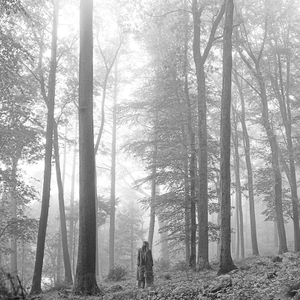Gutter Pairs: Patupaiarehe. Mountain Fairy Tribe - Gutter Pair (New Zealand 2000)
Patupaiarehe. Mountain Fairy Tribe - Gutter Pair (New Zealand 2000)
09 February (New Zealand ) within release Chinese New Year (Year of the Dragon). Maori Spirits & Guard goes into circulation Gutter Pairs Patupaiarehe. Mountain Fairy Tribe - Gutter Pair face value 2*1.20 New Zealand dollar
Gutter Pairs is horizontal format.
Also in the issue Chinese New Year (Year of the Dragon). Maori Spirits & Guard:
- Souvenir Sheet - Spirits and Guardians, Limited Edition S/S face value 2.30;
- Gutter Pairs - Araiteuru. North Island Sea Guardian - Gutter Pair face value 2*40;
- Gutter Pairs - Kurangaituku. Giant Bird Woman - Gutter Pair face value 2*80;
- Gutter Pairs - Patupaiarehe. Mountain Fairy Tribe - Gutter Pair face value 2*1.20;
- Gutter Pairs - Te Hoata & Te Pupu. Volcanic Taniwha Sisters - Gutter Pair face value 2*1.10;
- Gutter Pairs - Te Ngarara-huarau, Giant First Lizard - Gutter Pair face value 2*1.50;
- Gutter Pairs - Tuhirangi. South Island Sea Guardian - Gutter Pair face value 2*1.80;
Gutter Pairs Patupaiarehe. Mountain Fairy Tribe - Gutter Pair it reflects the thematic directions:
Animals are multicellular, eukaryotic organisms of the kingdom Animalia (also called Metazoa). All animals are motile, meaning they can move spontaneously and independently, at some point in their lives. Their body plan eventually becomes fixed as they develop, although some undergo a process of metamorphosis later on in their lives. All animals are heterotrophs: they must ingest other organisms or their products for sustenance.
Chinese New Year or the Spring Festival (see also § Names) is a festival that celebrates the beginning of a new year on the traditional lunisolar Chinese calendar. Marking the end of winter and the beginning of spring, observances traditionally take place from Chinese New Year's Eve, the evening preceding the first day of the year, to the Lantern Festival, held on the 15th day of the year. The first day of Chinese New Year begins on the new moon that appears between 21 January and 20 February
Folklore is the body of expressive culture shared by a particular group of people; it encompasses the traditions common to that culture, subculture or group. These include oral traditions such as tales, proverbs and jokes. They include material culture, ranging from traditional building styles to handmade toys common to the group. Folklore also includes customary lore, the forms and rituals of celebrations such as Christmas and weddings, folk dances and initiation rites. Each one of these, either singly or in combination, is considered a folklore artifact. Just as essential as the form, folklore also encompasses the transmission of these artifacts from one region to another or from one generation to the next. For folklore is not taught in a formal school curriculum or studied in the fine arts. Instead these traditions are passed along informally from one individual to another either through verbal instruction or demonstration. The academic study of folklore is called folkloristics.
The New Year is the time or day at which a new calendar year begins and the calendar's year count increments by one. Many cultures celebrate the event in some manner. In the Gregorian calendar, the most widely used calendar system today, New Year occurs on January 1 (New Year's Day, preceded by New Year's Eve). This was also the first day of the year in the original Julian calendar and the Roman calendar (after 153 BC)
The zodiac is a belt-shaped region of the sky that extends approximately 8° north and south (as measured in celestial latitude) of the ecliptic, the apparent path of the Sun across the celestial sphere over the course of the year. Also within this zodiac belt appear the Moon and the brightest planets, along their orbital planes. The zodiac is divided along the ecliptic into 12 equal parts ("signs"), each occupying 30° of celestial longitude. These signs roughly correspond to the astronomical constellations with the following modern names: Aries, Taurus, Gemini, Cancer, Leo, Virgo, Libra, Scorpio, Sagittarius, Capricorn, Aquarius, and Pisces.







